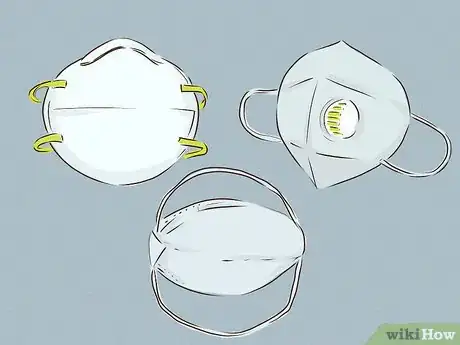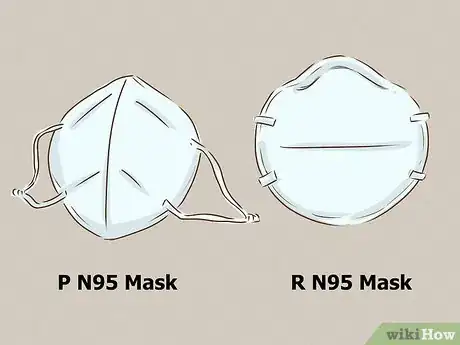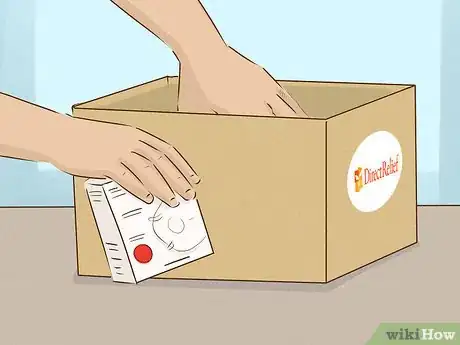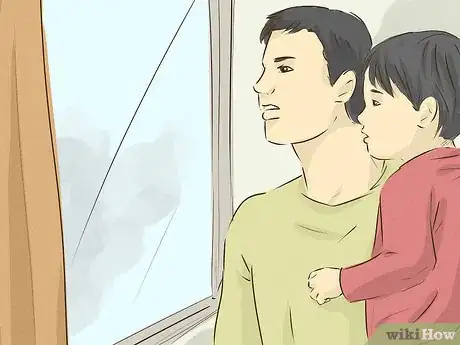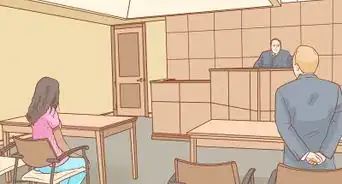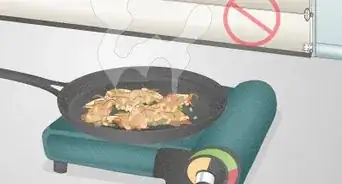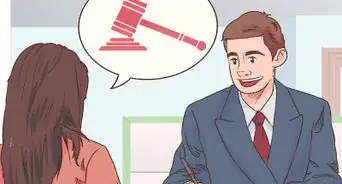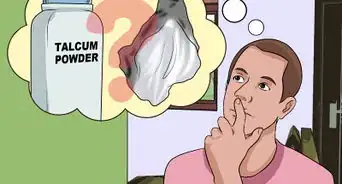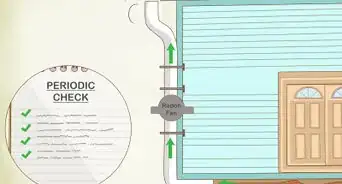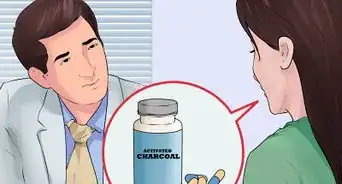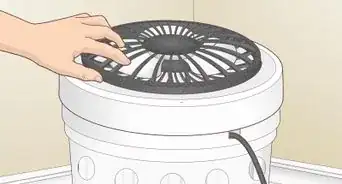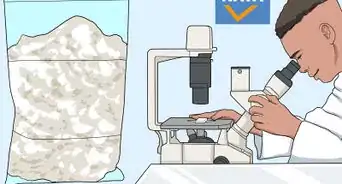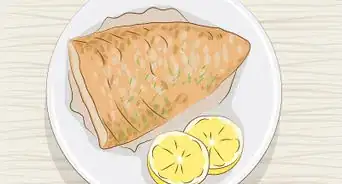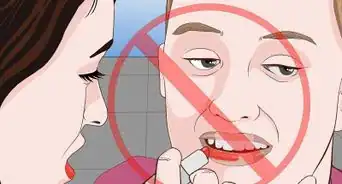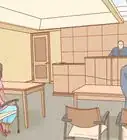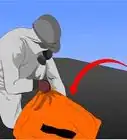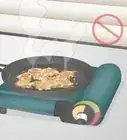This article was co-authored by Direct Relief. Direct Relief is an award-winning humanitarian aid organization, active in all 50 states and more than 80 countries. They focus on helping people affected by emergencies and natural disasters. Direct Relief has been highly rated by Charity Navigator, GuideStar, and the Center for High Impact Philanthropy at University of Pennsylvania, for their effectiveness, efficiency, and transparency.
There are 7 references cited in this article, which can be found at the bottom of the page.
wikiHow marks an article as reader-approved once it receives enough positive feedback. In this case, 85% of readers who voted found the article helpful, earning it our reader-approved status.
This article has been viewed 485,175 times.
If you’re in an area with poor air quality or an infectious disease is going around, wearing an N95 face mask is a great way to protect your lungs and overall health. Designed to filter out dangerous particles, the N95 is a lightweight and relatively cheap way to breathe clean air and stay healthy.
Steps
Choosing Your Face Mask
-
1Choose an N95 face mask to filter out particles in the air. N95 face masks are a great choice for protecting your lungs from particles in the air, which could be metal fumes (such as those caused by welding), minerals, dust, or biological particles, such as viruses. You can wear one when there’s been a flu outbreak in your area, or if pollutants or a fire has made air quality poor. These masks are made of structured, lightweight foam and fit over your nose and mouth.[1]
- Specially-made versions are also available for people in industrial jobs, and surgical N95 face masks are available for those in health care professions.
- The number refers to the percentage of particles that the mask can filter out. The N95 mask filters out 95% of dust and particulates.
- N95 masks shouldn’t be used if oil aerosols are present, as oil damages the filter. The “N” actually stands for “Not resistant to oil.”
-
2Go with an R or P mask if you’ll be exposed to an oily atmosphere. In cases where you face exposure to mineral, animal, vegetable, or synthetic oils, look for an R or P designated mask. The “R” stands for “somewhat oil-resistant,” which means it will protect you from oil vapors for a time limit specified on the packaging. The “P” stands for “oil-proof or strongly resistant.”[2]
- These masks also come with number classifications, such as P100 and R 95. The numbers stand for the percentage of particles they filter out.
- If you’re exposed to gases or vapors which are more concentrated than the exposure limits of these masks, look for a respirator that uses special canisters or cartridges to filter the air even more effectively.
Advertisement -
3Try on different sizes to get the best fit. Depending on the particular N95 mask you choose, available sizes range from extra small and small to medium and large. If possible, try on a couple of sizes before you purchase one. Make sure the mask feels snug and doesn’t slip on your face, remembering that you’ll also mold it to your face for an even tighter fit. If you’re not sure, go for a smaller size to make sure the mask won’t fall off.
-
4Check with your doctor if you have a respiratory or cardiac condition. N95 face masks can make it more difficult to breathe, especially if you have a chronic cardiac or respiratory condition. Talk with your doctor to see what extra precautions you can take. You may be able to use a model with exhalation valves, which can ease breathing and lessen heat build-up in the mask, although these versions shouldn’t be used if you need to maintain a sterile environment, like an operating room. Talk to your doctor before using if you have any of the following conditions:[3]
- Breathing problems
- Emphysema
- Chronic obstructive pulmonary disease (COPD)
- Asthma
- Cardio-pulmonary
- Immune compromised medical condition problems[4]
-
5Buy a NIOSH-certified N95 face mask from hardware stores or online. You can get an N95 mask at hardware or home improvement stores and pharmacies. You can also purchase directly from online retailers, like 3M. It’s important to only choose masks that are certified by the National Institute for Occupational Safety and Health (NIOSH). These masks will have the NIOSH logo and a certification approval number on the packaging or the mask.[5]
- If you need an N95 mask for your job, your employer will likely be required to provide it.
- Masks that aren’t NIOSH-certified may not provide good protection.
-
6Stock up on face masks so you’ll be ready when you need them. Face masks tend to have large spikes in demand and sell out fast during certain times, such as during an outbreak of an infectious illness or when a region experiences intense pollution. Be prepared by having some on hand for you and each of your family members at all times. Aim to have 2-3 masks per family member to be on the safe side.
- Take your local environment into account when stocking up on masks. You’ll need more if you live in a big city with notable pollution problems, for example, than if you live in a more rural environment with cleaner air.
Fitting Your Mask Properly
-
1Trim your facial hair before wearing your mask, when possible. If you know you need to wear an N95 mask, shave off all facial hair. It can get in the way of the mask and prevent a tight, sealed fit, which will compromise the effectiveness of the mask.[6]
- If it’s an emergency situation and you don’t have time to shave, fit the mask on as best you can.
-
2Wash your hands well before putting on your mask. Use soap and water and dry your hands well so you don’t get the mask wet. This will prevent you from accidentally contaminating your mask before you put it on.[7]
-
3Cup the mask in one hand and place it over your mouth and nose. Place the mask in the palm of your hand so that the straps face the floor. Set it over your nose and mouth with the nosepiece fitting over the bridge of your nose. The bottom should go just under your chin.[8]
- Try to touch only the outside and edges of the mask to keep it clean.
-
4Pull the bottom and top straps over your head. If your mask has two straps, pull the bottom one over your head and secure it around your neck, just under your ears. Continue to hold the mask tightly against your face with the other hand. Then, pull the top strap over and set it above your ears.[9]
-
5Mold the nose piece around the bridge of your nose. Set your first 2 fingertips on either side of the metal nose clip at the top of your mask. Run your fingers down both sides of the strip, molding it along the bridge of your nose.[10]
- If your mask doesn’t have a nosepiece, simply make sure the fit is tight and snug around your nose.
-
6Look for alternate solutions for children. N95 masks are not designed for children and won’t fit correctly on them. Instead, keep children inside as much as possible if air quality is poor. Take extra precautions in case of flu outbreaks, such as having kids wash their hands before meals and after sneezing or coughing. You can also try using masks made specifically for children, although they won’t be N95-designated.[11]
- Don’t use an N95 mask on children younger than age 17-18.
- Older teenagers can try on an N95 mask to test the fit and comfort. If it fits well and forms a tight seal, have them try walking around with it, paying close attention to any feelings of dizziness or difficulty breathing. If these symptoms occur, have them remove the mask and go inside.
Checking the Seal and Removing Your Mask
-
1Breathe through the mask and test for leaks. Set both hands against the mask and take a breath to make sure that it seals against your face. Then exhale, feeling for any leakage from the nosepiece or around the edges. If you feel air leaking from the nose area, re-mold the nosepiece. If it’s coming from the edges of the mask, adjust the placement of the straps on the sides of your head.[12]
- If your mask still isn’t completely sealed, ask a friend or family member for help, or try a different size or model.
-
2Remove your mask by pulling the straps over the top of your head. Without touching the front of the mask, pull the bottom strap over your head. Let it hang down over your chest. Then, pull the top strap over.[13]
- You can either throw the mask away or store it in a clean, sealed container or bag.
- Avoid touching the mask itself, as it might be contaminated.
-
3Throw away your mask if you used it in a medical setting. If you used your mask with an ill patient, or as a way to prevent getting sick in an outbreak, the outside of your mask is likely contaminated. Disposing of it properly will ensure that you won’t come into contact with contaminated particles. Carefully hold the mask by the straps and throw it away in a trash can.[14]
-
4Re-wear your mask as long as it stays dry and fits tightly. If you’re using the mask to protect from environmental hazards and it hasn’t come into contact with harmful germs, it should be fine to wear again. Test the seal of your mask each time you put it on to make sure it still fits snugly. Store your mask in a clean, sealed container or bag and make sure it doesn’t get bent out of shape by surrounding objects.
References
- ↑ https://blogs.cdc.gov/niosh-science-blog/2017/09/05/n95day20017/
- ↑ https://blogs.cdc.gov/niosh-science-blog/2017/09/05/n95day20017/
- ↑ https://www.fda.gov/MedicalDevices/ProductsandMedicalProcedures/GeneralHospitalDevicesandSupplies/PersonalProtectiveEquipment/ucm055977.htm
- ↑ https://www.health.ny.gov/publications/2805/index.htm
- ↑ https://www.health.ny.gov/publications/2805/index.htm
- ↑ https://www.fda.gov/MedicalDevices/ProductsandMedicalProcedures/GeneralHospitalDevicesandSupplies/PersonalProtectiveEquipment/ucm055977.htm
- ↑ https://www.cdc.gov/niosh/docs/2010-133/pdfs/2010-133.pdf
- ↑ https://www.cdc.gov/niosh/docs/2010-133/pdfs/2010-133.pdf
- ↑ https://www.cdc.gov/vhf/ebola/hcp/ppe-training/n95respirator_gown/donning_09.html
- ↑ https://www.cdc.gov/niosh/docs/2010-133/pdfs/2010-133.pdf
- ↑ https://www.fda.gov/MedicalDevices/ProductsandMedicalProcedures/GeneralHospitalDevicesandSupplies/PersonalProtectiveEquipment/ucm055977.htm
- ↑ https://www.cdc.gov/niosh/docs/2010-133/pdfs/2010-133.pdf
- ↑ https://www.cdc.gov/niosh/docs/2010-133/pdfs/2010-133.pdf
- ↑ https://www.cdc.gov/niosh/npptl/topics/respirators/disp_part/respsource3healthcare.html
- ↑ https://www.3m.com/3M/en_US/safety-centers-of-expertise-us/respiratory-protection/fit-testing
About This Article
If you need to wear an N95 face mask because of poor air quality or a viral outbreak, start by shaving off your facial hair if you have any since it can get in the way and prevent a tight seal. If you're in an emergency situation and you don't have time to shave, you can skip this step. When you're ready, place the mask over your mouth and nose so the nosepiece is covering the bridge of your nose and the bottom of the mask is under your chin. Then, pull both straps over your head, and position the bottom strap under your ears and the top strap above them. Finish by molding the nosepiece around the bridge of your nose with your fingers to create a tight seal. For advice from our Humanitary co-author, like how to choose the right N95 face mask for your situation, keep reading.
